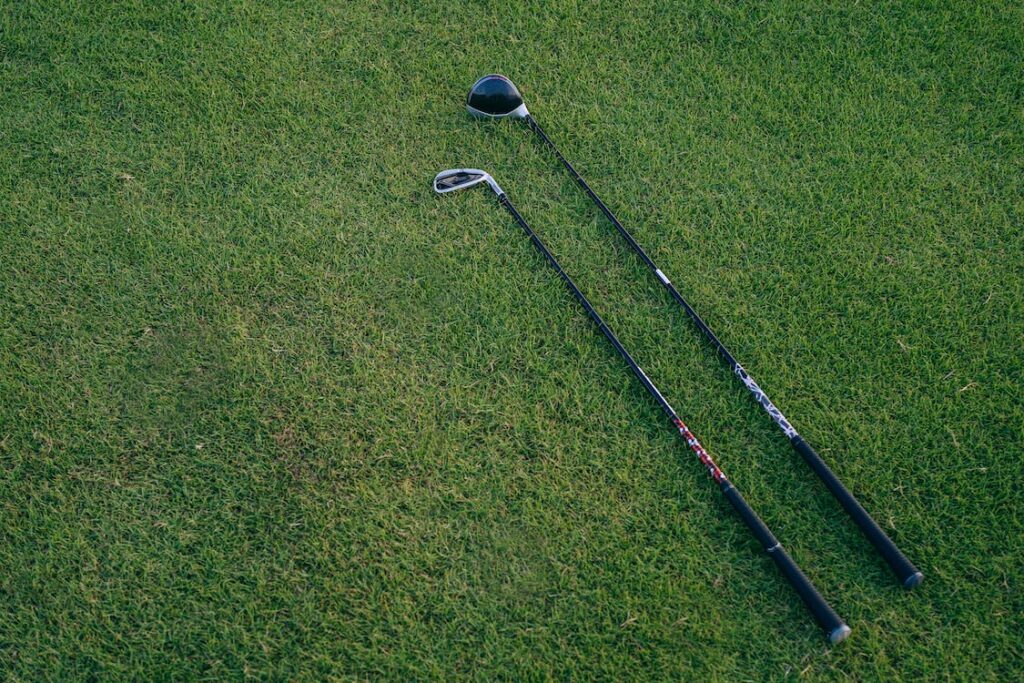Anyone who plays golf on a regular basis will agree that, while the whole is what gives the club its quality, the shaft is the key part of the most important tool in this sport.
Choosing the shaft that best suits your game is not always easy.
That is why, today, we are going to give you the most important facts you need to take into account to distinguish between them.
Each one by name.
The first thing is to be clear about the definition of each type of shaft.
Depending on the flexion, they are classified into 5 categories, from greater to lesser flexibility, they are:
- Ladies Flex shafts (you will identify them by an “L”, printed or marked).
- Senior or Amateur Flex (“A”) rods.
- Regular (“R”) shafts.
- Stiff (“S”) shafts.
- Extra Stiff (“X”) shafts.
Today we will talk about the Regular and Stiff shafts, which are the ones we find in most players’ bags.
Regular shafts are the most common, the standard ones. Stiff shafts are the stiffest and are recommended for players with a high swing speed.
Which one should you choose for yourself? There are many answers.
What is important to know is that it is not as simple as saying one or the other without doing a little more research.
Each brand, each manufacturer, has its own way of manufacturing and the one that may suit you very well from one brand, may be much stiffer or more flexible than yours if you buy it from another.
So, first, our advice is that, before deciding on a rod, you should try it out. Only then can you be sure that it is the one for you.
And read on, of course.
Comparing the two.
When you compare the two, there are many factors that come into consideration.
As we said a moment ago, beyond thinking about specific brands or models, consider the following factors.
1. Shaft flexibility.
Choosing the right shaft is essential for your game, because it is the element that most affects how your club hits the ball.
If you want to hit it well, with the centre of the clubface, pay attention to how to choose it.
The shaft bends backwards when you start the downswing of the club. You don’t always notice it, but it always happens to a greater or lesser extent.
Then it comes back into place, even a little further forward. This effect, called whip, has a great influence on the shot, on the distance the ball travels and on its trajectory.
When the shaft is very flexible, it usually goes to the left, higher (although not as accurately) and further. But if it is very stiff, it will go to the right and that ball will fly lower and shorter.
2. Speed.
The speed you achieve with your swing is another important element in deciding which type of shaft to choose.
This is where it matters:
- The bending point (Kick Point or Bend Point) is the point at which the shaft bends.
- The Torque is the force that makes the rod twist on its own axis.
- You have to know your launch angle and your spin, both of which are generated by your swing.
If you have a very high swing speed, choose a Stiff shaft to reduce the spin. If you have been playing for a short time or have a slower swing, look for a more flexible shaft to increase your launch angle and spin.
Try to measure your stroke speed. I’m sure where you train there are machines available to do this.
Those results will tell you your swing type and which shaft is right for you:
- Slow swing (between 80 and 110 km/h). Senior or Lady.
- Medium swing (between 110 and 145 km/h). Regular Swing.
- Fast Swing (over 145 km/h). Stiff or Extra Stiff.
What can happen if you play with a shaft that does not match your swing?
If your swing is slow or fast and you use a Regular, you will tend to slice.
If it is slow and you use a Stiff, you will lose control.
If your swing is fast and you play with a Regular, your ball will hook.
In all cases, the distance your ball travels will be decreased.
3. Weight and material of the rod.
The lighter it is, the faster it will move and vice versa.
Because the weight is closely linked to the flexibility of the shaft.
There are very heavy shafts, 130-140 grams (the Stiff or Extra Stiff, for example) and 40 grams (the Lady or Senior shafts weigh this).
Keep a balance between the weight of your shaft and the speed of your stroke. We’ve already talked about speed, but now we’re going to talk about the material.
They are usually made of graphite or steel.
The first, which is lighter, makes it easier to swing fast and the second provides a more consistent feel, which will result in more accurate shots.
A steel shaft can weigh between 140 and 85 grams and a graphite shaft between 120 and 40 grams.
There is no argument here. There is no best material.
Depending on the stroke, the club and its purpose, one will suit you better than the other.
Generally, Stiffs tend to be made of steel and Regulars tend to be made of graphite.
4. Length.
Is the length of the shaft important?
Certainly, one of the basic aspects when choosing a rod, is the length.
To know this feature, you have to take into account your own height as well:
If you are taller than 1.85m, you will need longer rods than the standard ones.
If you are between 1.60 and 1.65, your clubs will need to be shorter.
Have you calculated the distance from your hand to the ground?
If it’s around 71 centimetres, your shafts will be standard.
Even if you hear about the advantages of using longer or shorter clubs, it’s important that they fit you. This is the best way to optimise your stroke.
5. Feeling.
Feel comfortable with the clubs you use, get used to them and get a very elaborate swing, which almost comes out on its own.
If you have doubts or you can’t find the balance we have just told you, our last piece of advice is to get a custom fitting so you can find out what your ideal shafts are.
Then you can change your clubs, if you see that you need it and it is the right time to do so or simply change the shafts of the most necessary clubs to improve your game.
In any case and whenever you go out on the course, enjoy golf.

